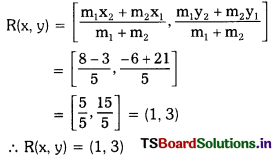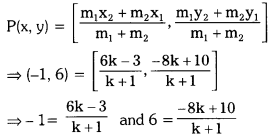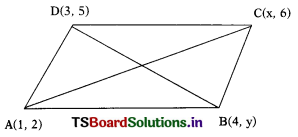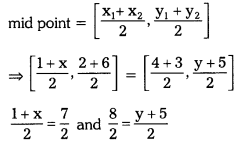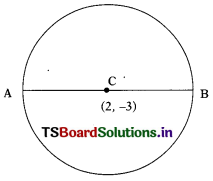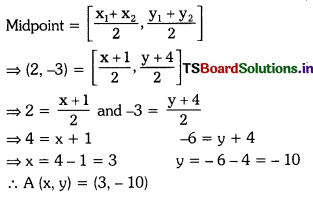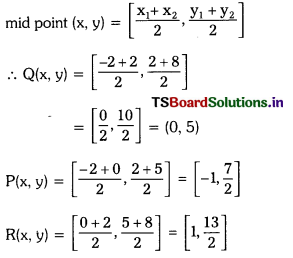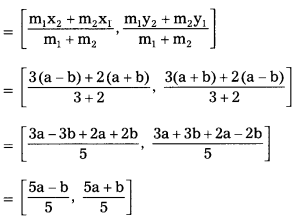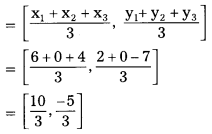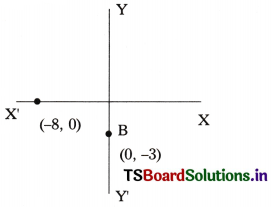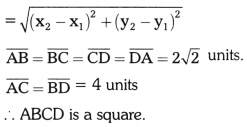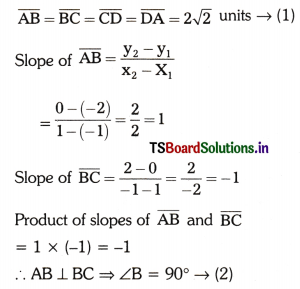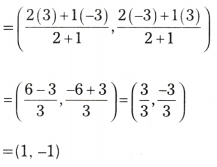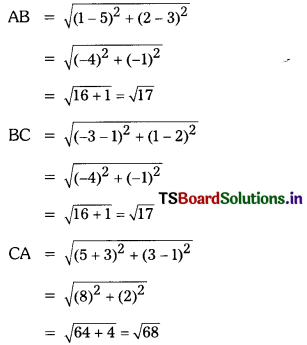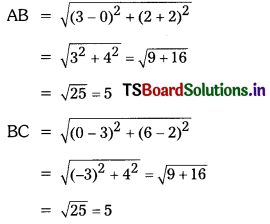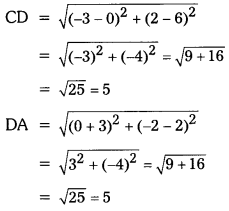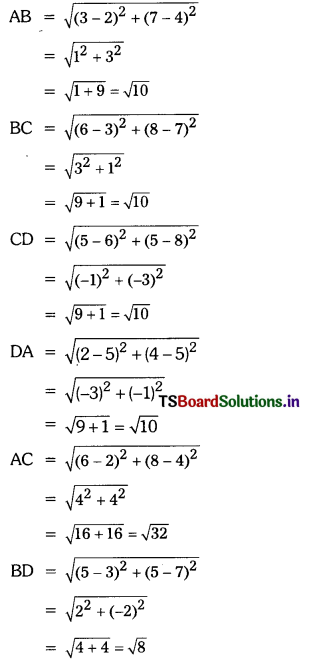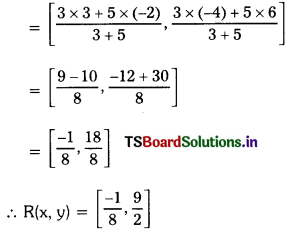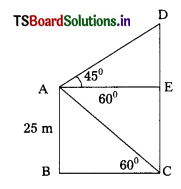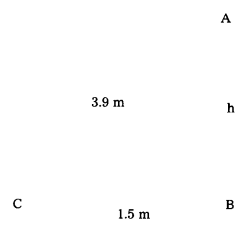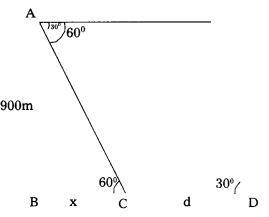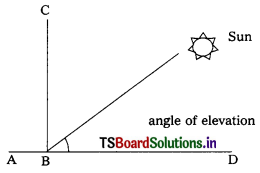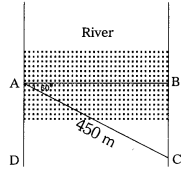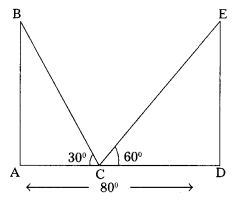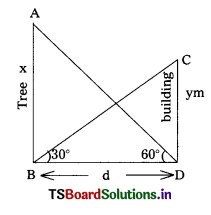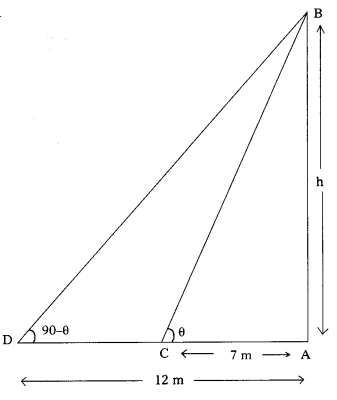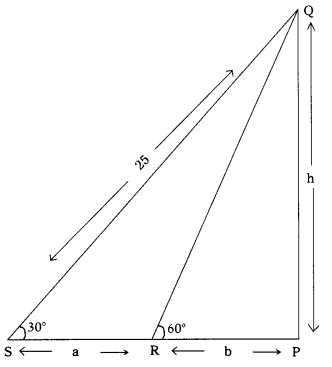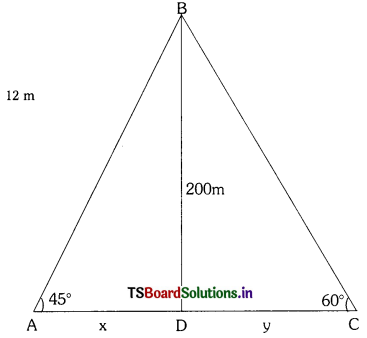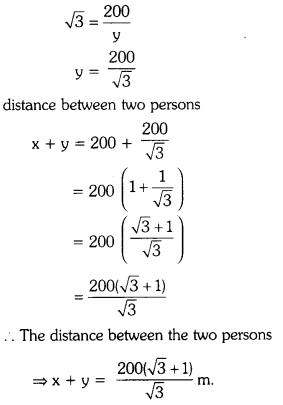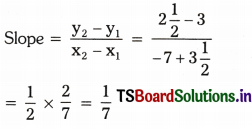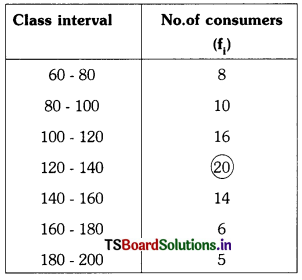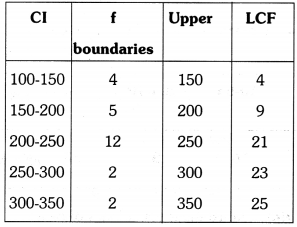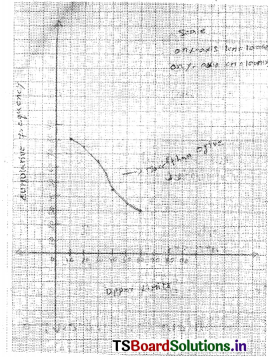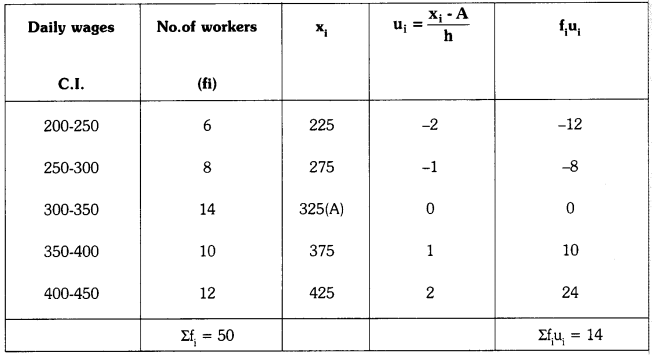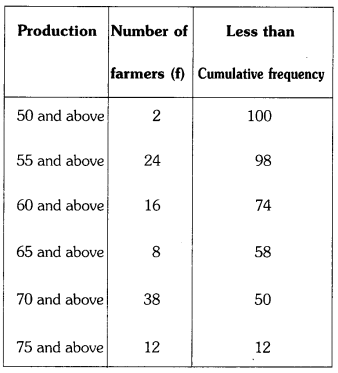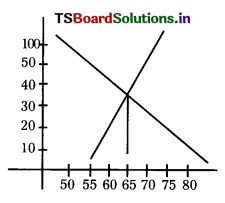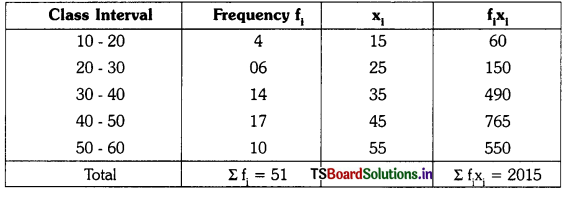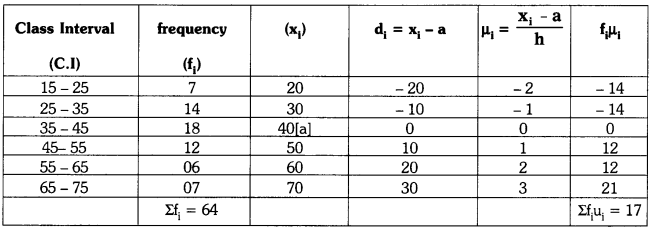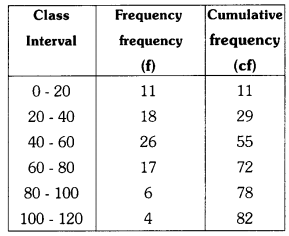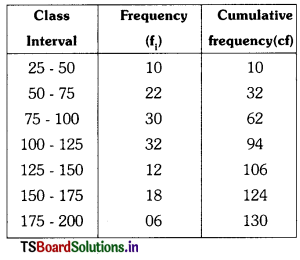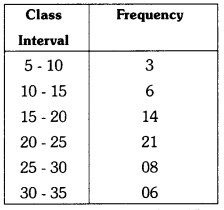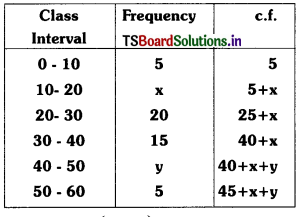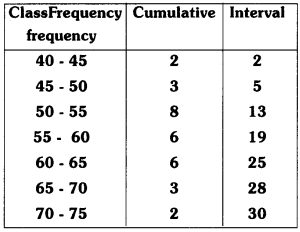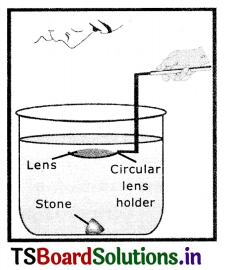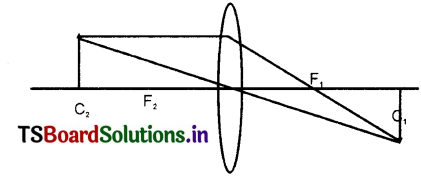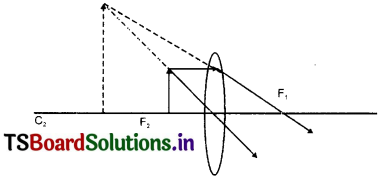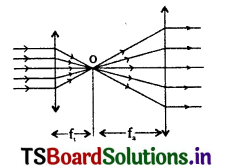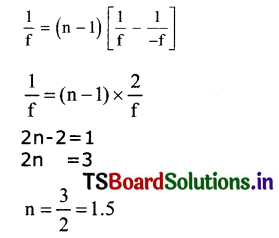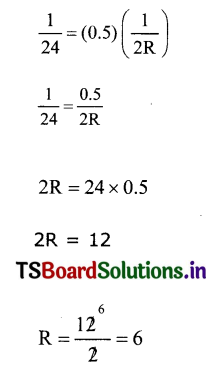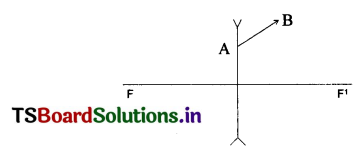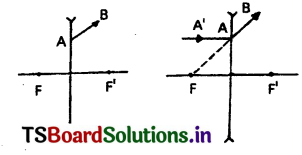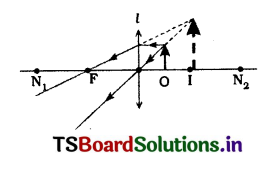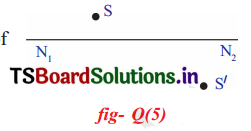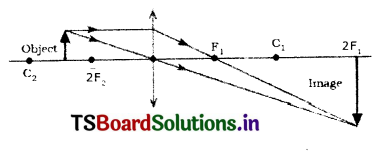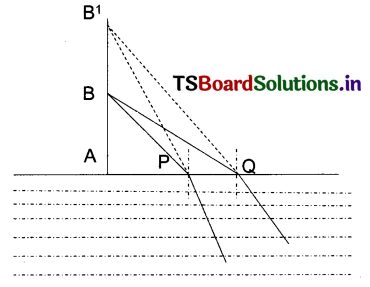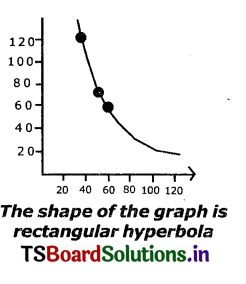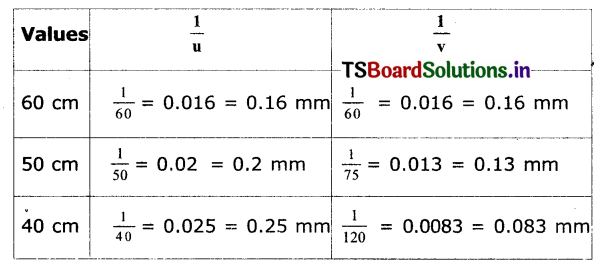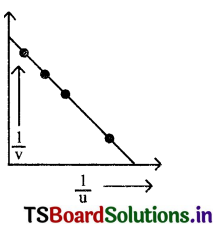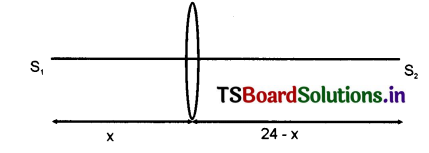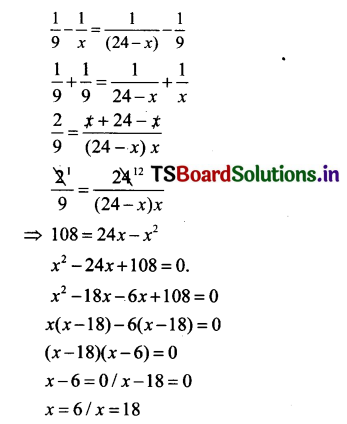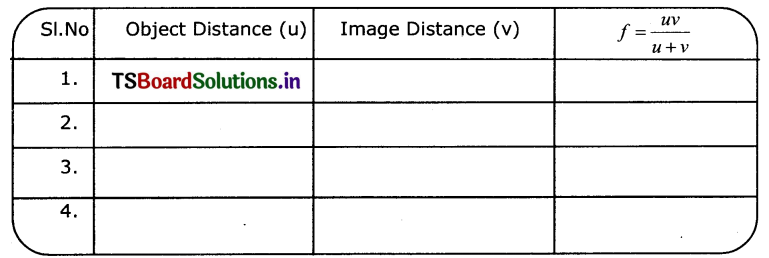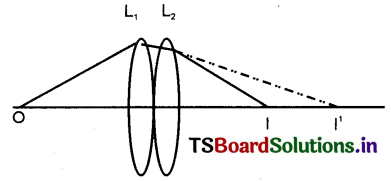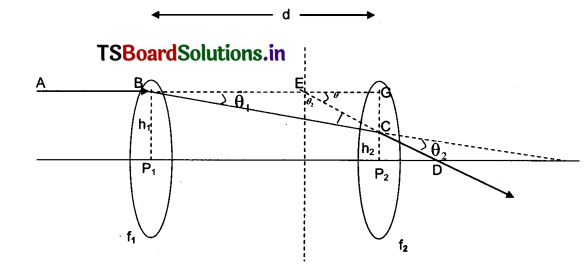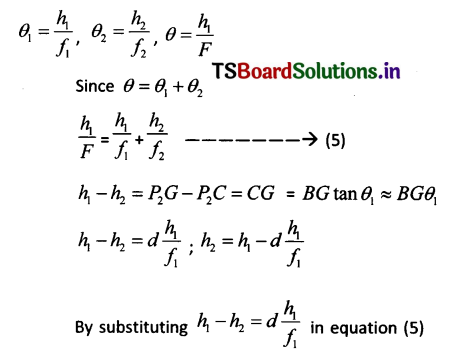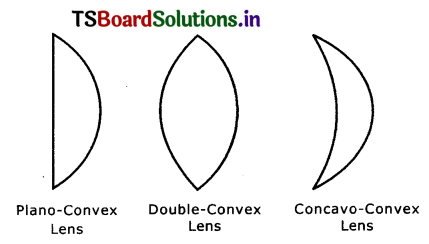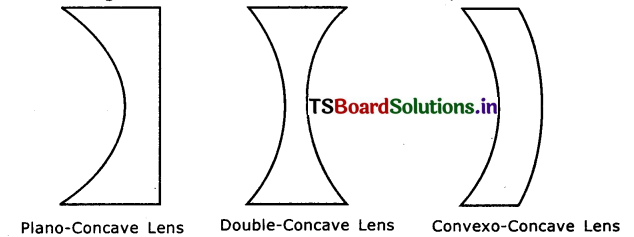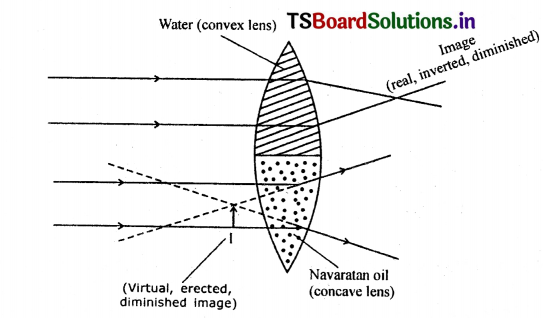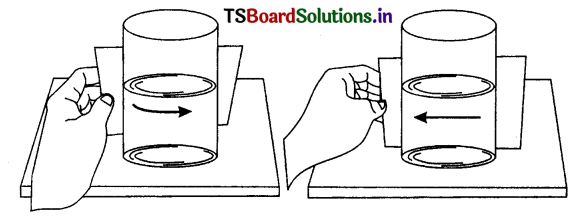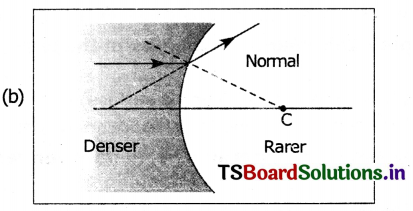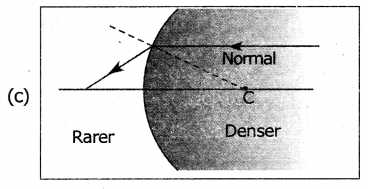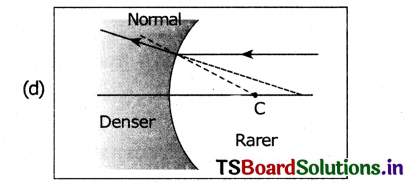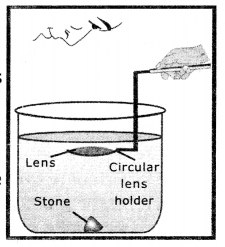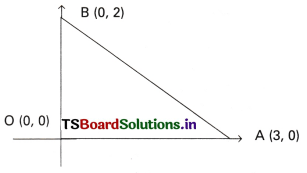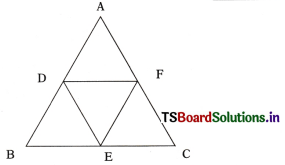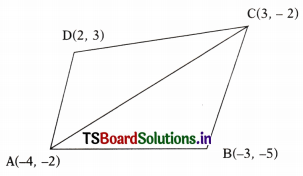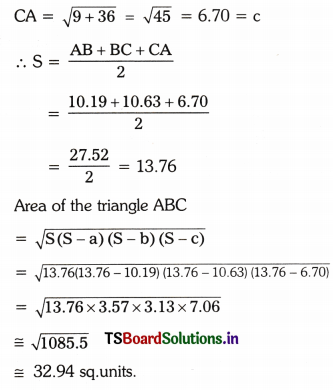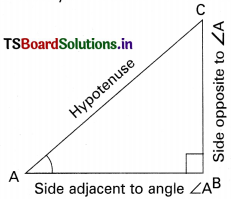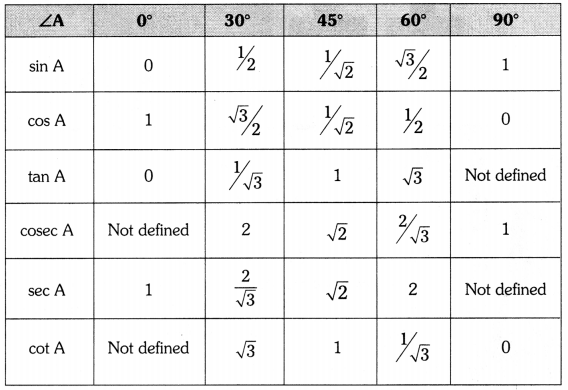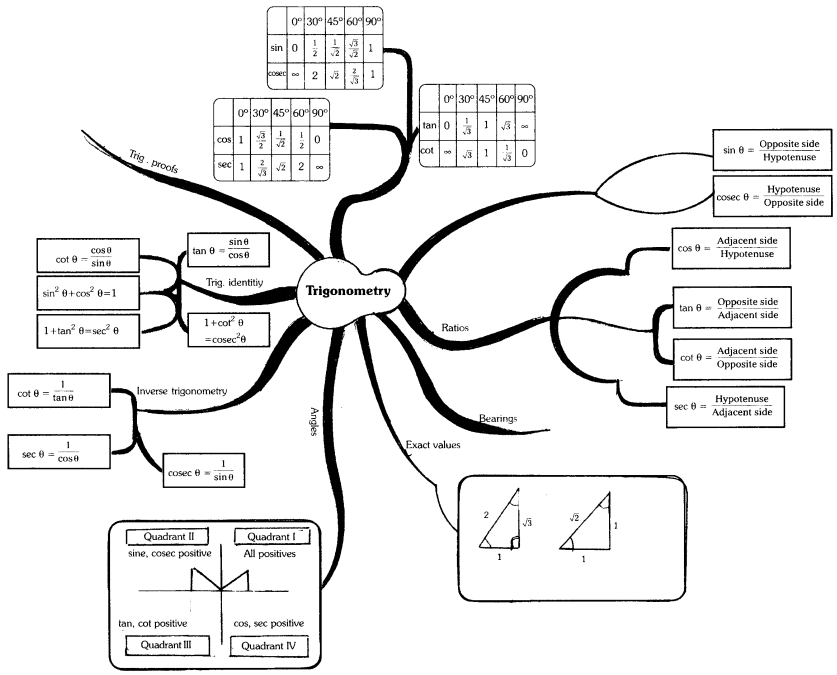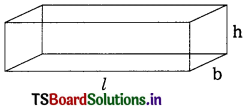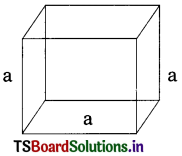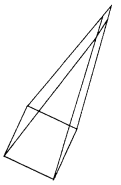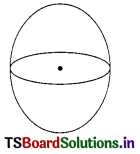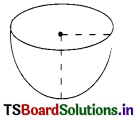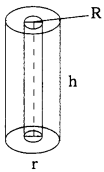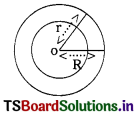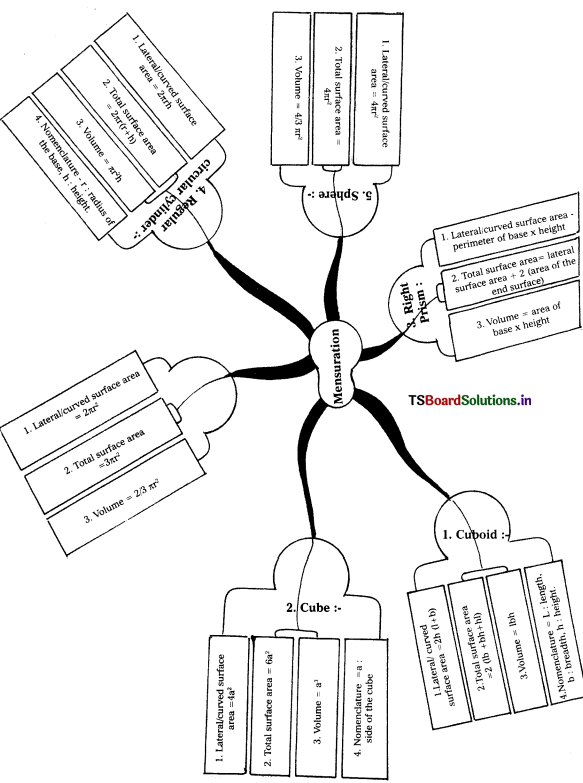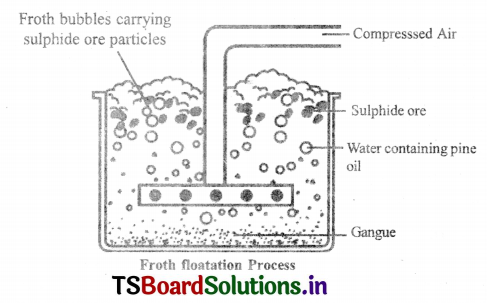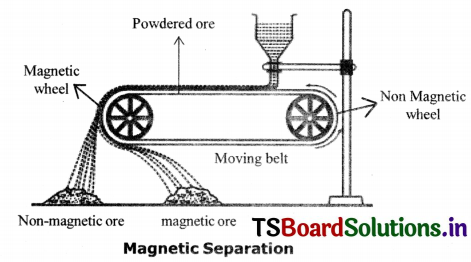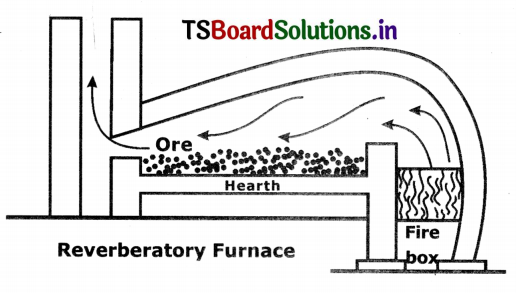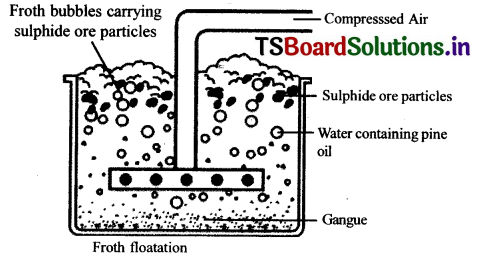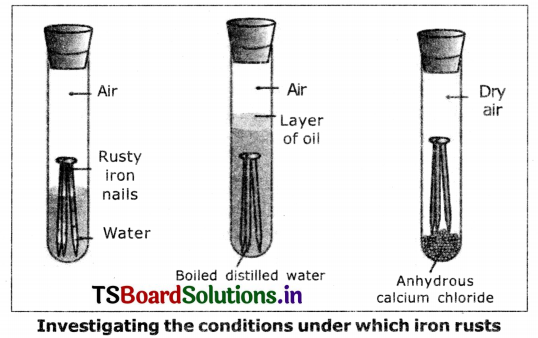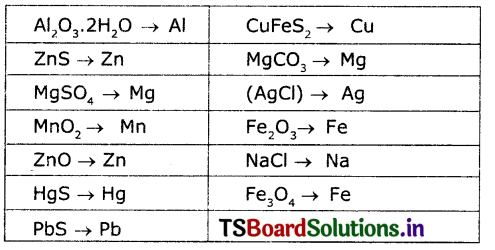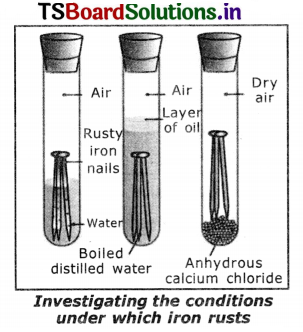These TS 10th Class Maths Chapter Wise Important Questions Chapter 13 Probability given here will help you to solve different types of questions.
TS 10th Class Maths Important Questions Chapter 13 Probability
Previous Exams Questions
Question 1.
5 red and 8 white balls are present in a bag. If a ball is taken randomly from the bag then find the probability of it to be
i) white ball
ii) not to be white ball (A.P. Mar. ’16)
Solution:
Total number of balls present in bag
= 5 (red) + 8 (white) = 13
Probability for taking out a white ball
P(E) = \(\frac{\text { No. of favourable outcomes }}{\text { Total No. of outcomes }}\)
= \(\frac{8}{13}\)
Probability for not to be a white ball
P(\(\overline{\mathrm{E}}\)) = \(\frac{8}{13}\)
we know P(E) + P(\(\overline{\mathrm{E}}\)) = 1
⇒ P(\(\overline{\mathrm{E}}\))
= 1 – P(E) = 1 – \(\frac{8}{13}\)
= \(\frac{5}{13}\)
![]()
Question 2.
When die is rolled once unbiased what is the probability of getting a multiple of 3 out of possible out comes ? (T.S. Mar. ’15)
Solution:
P(E) = \(\frac{\text { favourable outcomes }}{\text { Total outcomes }}\) = \(\frac{2}{6}\) = \(\frac{1}{3}\)
Question 3.
There are 12 red, 18 blue and 6 white balls in a box. When balls is drawn at random from the box, what is the probability of not getting a red ball ? (T.S. Mar. ’15)
Solution:
Total Number of balls = 12 + 8 + 6
= 36
Number of red balls = 12
probability of getting red ball
P(\(\overline{\mathrm{R}}\)) = \(\frac{\text { favourable outcomes }}{\text { Total outcomes }}\)
= \(\frac{12}{36}\) = \(\frac{1}{3}\)
∴ Probability of not getting red ball
P(R) = 1 – \(\frac{1}{3}\) = \(\frac{2}{3}\)
Total Number of balls = 12 + 18 + 6 = 36
Exclude, the red balls, the number of remaining balls = 18 + 6 = 24
∴ Probability of not getting a
Red ball = \(\frac{24}{36}\) = \(\frac{2}{3}\)
![]()
Question 4.
There are 100 flash cards labelled from 1 to 100 in a bag. When a card is drawn from the bag at random, what is the probability of getting …….
(i) a card with prime number from possible outcomes ?
(ii) a card without prime number from possible outcomes ? (T.S. Mar. ’15)
Solution:
Number of prime numbers between 1 and 100 = 25
Probability of getting a card with prime numbers = \(\frac{25}{100}\) = \(\frac{1}{4}\) = 0.25
Probability of getting a card without prime number = \(\frac{75}{100}\) = 0.75
1 – 0.25 = 0.75
Question 5.
Find the probability of setting a sum of the numbers on them is 7, when two dice are rolled at a time. (T.S. Mar. ’16)
Solution:
When two dice are rolled at a time the total outcomes are = 62 = 36.
Number of outcomes such that their sum of numbers on face is 7 = 6
∴ Probability of getting sum of numbers on faces to be
7 = \(\frac{6}{36}\) = \(\frac{1}{6}\)
![]()
Question 6.
A bag contains 5 red balls and some blue balls. If the probability of drawing a blue ball is double that of red ball, find the number of blue balls in the bag. (T.S. Mar. ’16)
Solution:
Number of red balls present in a bag = 5
Let the No. of blue balls = x (say)
Then the total No. of balls = 5 + x
From those (5 + x) balls in the bag the number of favourable outcomes to take a red ball randomly = 5
So, the probability of taking a red ball = \(\frac{5}{5+x}\)
Now
The number of favourable outcomes to take a blue ball randomly = x
So, the probability of taking a blue ball = \(\frac{x}{5+x}\)
From the given problem
Probability of blue bell = (Probability of red ball) (2)
\(\frac{x}{5+x}\) = \(\left[\frac{5}{5+x}\right]\) 2
\(\frac{x}{5+x}\) = \(\frac{10}{5+x}\) ⇒ x = 10
∴ No. of blue balls in the bag = 10.
Additional Questions
Question 1.
Kishore buys a fruit from a shop. The shopkeeper have one box. The box contain 18 mangoes, 32 apples so shopkeeper takes out one fruit at random what is the probability that the mango taken out from box.
Solution:
Given
Number of mangoes in the box = 18
Number of apples in the box = 32
Total number of fruits in the box = 18 + 32
So total number of outcomes = 50
Let E be the even that the mango taken out of the box = 18
We know that,
P(E) = \(\frac{\text { No. of outcomes favourable to E}}{\text { Total No. of all possible outcomes }}\)
= \(\frac{18}{50}\) = \(\frac{9}{25}\)
Question 2.
A room contains 30 green chairs and some white chairs if the probability of drawing a white chair is triple that of green chair determine the number of white chairs in the room.
Solution:
Let the number of white chairs = x
Given number of green chairs = 30
Total number of chairs in room = x + 30
Total outcomes in drawing a chair at random = x + 30
Number of outcomes favourable to green chair = 30
∴ P(G) = \(\frac{30}{x+30}\)
So, given in problem P(W) = 3 × \(\frac{30}{x+30}\)
= \(\frac{90}{x+30}\)
We know that P(G) + P(W) = 1
\(\frac{30}{x+30}\) + \(\frac{90}{x+30}\) = 1
\(\frac{120}{x+30}\) = 1
x + 30 = 120
x = 90
∴ No. of white chairs x = 90.
![]()
Question 3.
There are 25 cards of same size in a bag on which number 1 to 25 are written one card is taken out of the bag at random. Find the probability that the number on the selected card is not divisible by 5.
Solution:
Given total number of cards = 25
The number which are divisible by ‘5’ are 5, 10, 15, 20, 25
No. of all possible outcomes n(5) = 25
Number of out comes favourable to
E = n(E) = 5
∴ P(E) = \(\frac{n(E)}{n(S)}\)
= \(\frac{5}{25}\) = \(\frac{1}{5}\)
We know that P(E) + P(\(\overline{\mathrm{E}}\)) = 1
P(\(\overline{\mathrm{E}}\)) = 1 – (P(E))
p(\(\overline{\mathrm{E}}\)) = 1 – \(\frac{1}{5}\)
= \(\frac{5-1}{5}\)
P(\(\overline{\mathrm{E}}\)) = \(\frac{4}{5}\)
∴ probability that the number selected card is not divisible by 5 = \(\frac{4}{5}\)
Question 4.
A jar contains 18 marbles, some are red and other white if a marble is drawn at random from the jar the probability that it is white \(\frac{5}{6}\) . Find the number of white marbles.
Solution:
Total number of marbles in the jar = 18
Let the number of red marbles = k
The number of white marbles = 18 – k
probability of drawing a red marble = \(\frac{\mathrm{k}}{18}\)
From problem = \(\frac{\mathrm{k}}{18}\) = \(\frac{5}{6}\)
⇒ k = \(\frac{90}{6}\)
⇒ k = 15
No. of red marbles = k = 15
No. of white marbles = 18 – 15 = 3.
![]()
Question 5.
A game consists of tossing a one rupee coin 2 times and noting its outcome each time. Ravi wins if all the wins give the same result, i.e., two heads or two tails and lose otherwise. Calculate the probability that he will lose the game.
Solution:
We know if a coin is tossed for n times, then the total number of outcomes = 2n
So, a coin is tossed for 2 times, then the total number of outcomes 22 = 4.
see here
T T
T H
H T
H H
of the above no. of outcomes with different result = 2.
probability of lossing the game
= \(\frac{\text { No. of favourable outcomes of lose }}{\text { No. of total outcomes }}\)
= \(\frac{2}{4}\) = \(\frac{1}{2}\)
Question 6.
A lot consists of 200 ball pens of which 50 are defective and others are good. The shop keeper draws one pen at random and gives to sindhu. what is the probability that,
1) She will buy it ?
2) She will not buy it ?
Solution:
i) Total no. of ball pens = 200
∴ Number of all possible outcomes = 200
Number of defective ball pens = 50
Number of good ball pens = 200 – 50
⇒ No. of favourable outcomes = 150
probability that sindhu will buy it
= \(\frac{\text { No. of favourable outcomes }}{\text { Total No. of all possible outcomes }}\)
= \(\frac{150}{200}\) = \(\frac{3}{4}\)
![]()
ii) Probability that sindhu will not buy it
= 1 – (probability that sindhu will buy it)
= 1 – \(\frac{3}{4}\)
= \(\frac{4-3}{4}\)
= \(\frac{1}{4}\)
